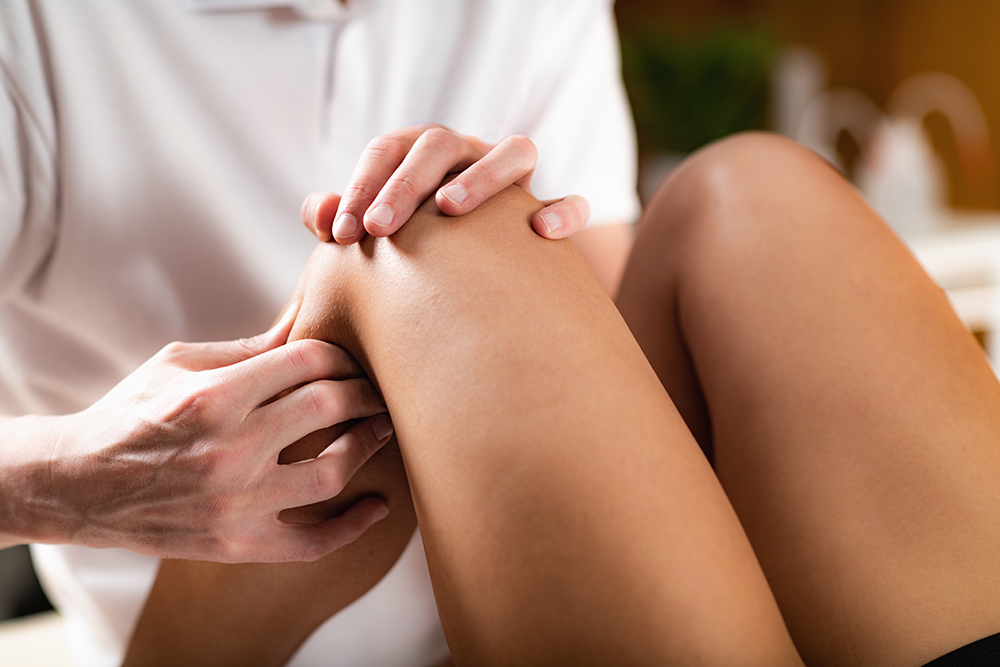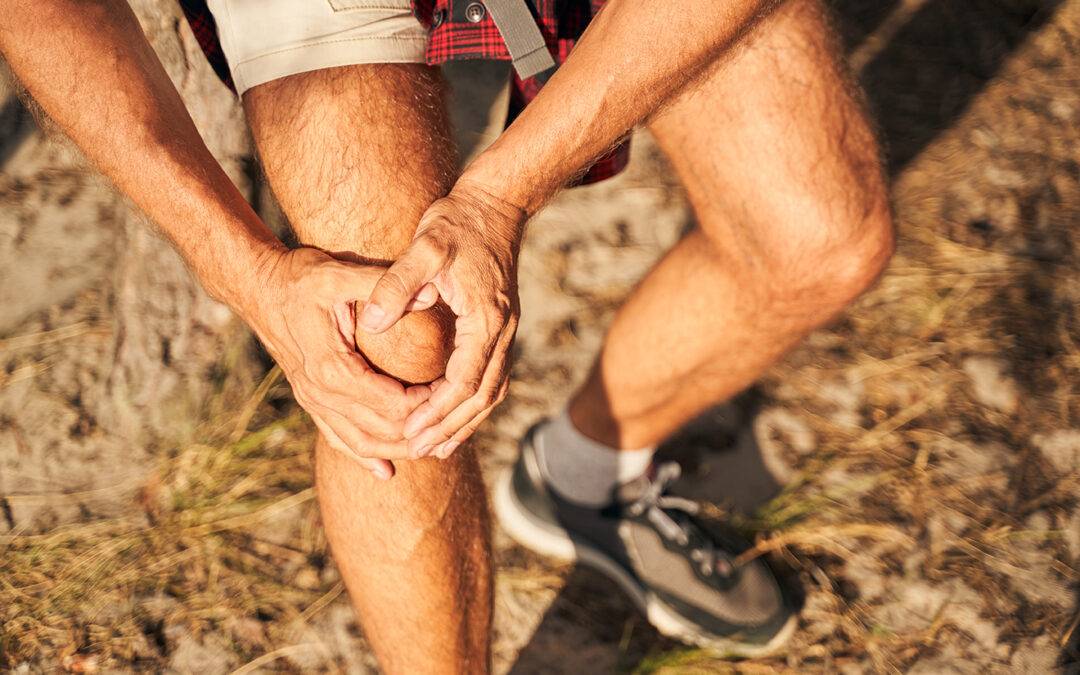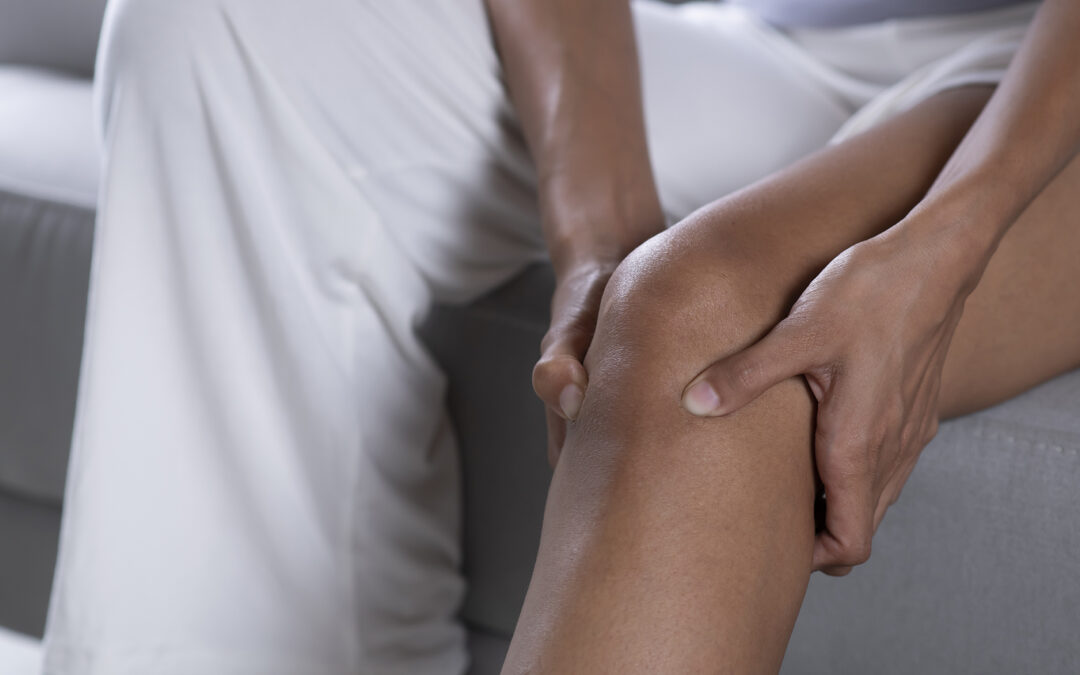Contents
If you hear a crunching sound when moving your knee or placing your hand on top of it, you may have knee crepitus. People have also described the crunching sound in their knee as a snapping, cracking and popping sound.
About 70% of people experience knee crepitus. This condition can occur on either one or both of your knees.
If you experience knee pain while hearing the crunching sound, the cause of your knee crepitus may be more severe. This means that it is important to discuss some causes of knee crepitus and possible treatments. Please note that in the context of this article, “problematic” simply means causing pain or other symptoms.
1 common non-problematic cause of knee crepitus
The possible causes of your knee crepitus vary depending on how much knee pain you are experiencing. For example, if you’re not in any pain while hearing the crunching sound in your knee, then the cause of the sound is not problematic (i.e., not causing pain or other symptoms). One non-problematic cause of your knee crepitus may be air bubbles:
- Air bubbles — When air enters the soft tissue around your knee joint, small bubbles are produced. When you bend or stretch your knee, these bubbles may burst, which produces a crunching sound. This crunching sound in your knee is typically not harmful.
3 common problematic, non-injury-related causes of knee crepitus
Some non-injury-related causes of knee crepitus may be problematic because they can lead to pain, inflammation and reduced mobility. Problematic causes of knee crepitus range from arthritis to surgery. Here are a few common causes of knee crepitus:
- Patellofemoral instability — Patellofemoral instability refers to having a relatively high level of knee flexibility and mobility. These levels vary with each person, as they depend on a person’s age and history of injury. If your knees have a high level of flexibility and mobility, you may hear a louder crunching sound in your knee than someone with a lower level of flexibility and mobility. For example, you may hear a louder crunching when bending your knee during sports or during daily activities like going up or down stairs. This condition is problematic because it is associated with knee pain, reduced knee function and the injury of nearby tissue.
- Osteoarthritis (OA) — Osteoarthritis is most common among people at least 50 years old. This condition is caused by the tissue in the bones of the knee joint breaking down over time. This breakdown causes the bones to rub together. The resulting pain and inflammation can lead to a crunching sound in the knee. This condition is problematic because it can lead to knee pain and knee-joint stiffness, which can lead to reduced knee mobility.
- Total knee arthroplasty (TKA) — According to research, about 18% of people with total knee arthroplasty (TKA) develop crepitus. TKA is a type of surgery involving knee replacement. People who have had this type of surgery may be more attuned to crunching sounds in the knee afterward than they were beforehand. This condition can be problematic because these sounds may distract you while running or walking.
5 common problematic, injury-based causes of knee crepitus
Besides surgery and arthritis, knee injuries can also cause knee crepitus. These types of injuries can be problematic because they can lead to pain and reduced mobility in your knee. Here are five problematic, injury-based causes of knee crepitus:
- Stretched ligaments — Ligaments refer to the supporting tissue in your knee joint. There are 4 main types of ligaments between your thighbone and shinbone:
- Anterior cruciate ligament — The anterior cruciate ligament helps your shinbone rotate and move in a forward direction.
- Posterior cruciate ligament — The posterior cruciate ligament helps your shinbone move in a backward direction.
- Medial collateral ligament — The medial collateral ligament helps keep the inside of your knee stable.
- Lateral collateral ligament — The lateral collateral ligament helps keep the outside of your knee stable.
Knee ligament injuries may occur because of car accidents or from sudden stops or changes in direction while playing sports. Your ligaments may stretch while going over a bone in your knee joint. If you injure one of your knee ligaments, you may hear a crunching sound and experience inflammation around your knee joint. This inflammation can lead to a pinched nerve in your knee, which can cause you to feel knee pain. Knee ligament injuries can be problematic because scar tissue can form, which can prevent your knee from functioning properly.
- Arthrofibrosis — Arthrofibrosis may occur after a knee surgery or a traumatic injury. This condition refers to the presence of scar tissue in your knee joint. This scar tissue can cause pain and tightness in that area. This condition can be problematic because it can limit the range of motion in your knee joint. A limited range of motion in your knee may make swimming, yoga and other activities difficult.
- Meniscus tears — If you are an athlete and/or like to run, you may be likely to develop a meniscus tear. Your meniscus is a piece of cartilage in your knee that provides stability and acts as a shock absorber. You may injure your meniscus during a tackle while playing football or even while rising from a squatting position. When a meniscus tear happens, you may hear a crunching sound near your knee joint and feel pain when touching it. You may also hear a crunching sound when bending your knee to sit down. A meniscus tear is problematic because it can lead to knee pain when you twist and/or straighten your knee. This type of pain can make bending to pick up objects and making the bed more difficult.
- Chondromalacia patella — Chondromalacia patella occurs because of damage to the tissue below your kneecap. You may have an aching feeling in this area. Actions that can lead to this condition include frequently bending your knees and falling on your knees. This condition is problematic because it can lead to knee pain when you squat, kneel or sit for a long period.
- Patellofemoral pain syndrome (PFS) — If you are an athlete, you typically have a high likelihood of developing patellofemoral pain syndrome (PFS). Examples of PFS-causing behaviors include running uphill, squatting, and going up stairs. Even if you aren’t an athlete, you are still likely to develop PFS if you engage in the following behaviors:
- Exercising more often all of a sudden.
- Falling on your knee.
- Bumping your knee against a hard surface.
- Sitting with bent knees for a long period.
PFS occurs because of excessive pressure between your kneecap — a bone in front of your knee joint — and your femur — a bone in your thigh. This pressure causes the tissue in your knee joint to break down and become less smooth. If you have PFS, you may experience pain, swelling and stiffness in your knee joint. PFS is problematic because its symptoms may make actions such as climbing stairs and picking up objects difficult.
3 PT treatments that can help address problematic crepitus causes
If left untreated, knee crepitus may get worse, potentially causing other forms of chronic pain. One form of treatment for knee crepitus is physical therapy. Here are some common techniques that physical therapists offer to help treat knee crepitus:
- Manual therapy — Some manual therapy techniques that physical therapists offer include soft tissue manipulation and joint mobilization. In soft tissue manipulation, a licensed physical therapist can help reduce swelling and encourage your body to create more natural joint-lubricating fluid. This process can be especially beneficial if your knee crepitus is caused by arthritis, as this means that your knee joint is in need of more lubricating fluid. In joint mobilization, your physical therapist can help improve the function and mobility of your knee joint. This technique can be particularly beneficial to patients with osteoarthritis, as this condition can cause inflammation in the knee. This inflammation may reduce the function and mobility of the knee, which are aspects that physical therapists directly target in joint mobilization.
- Aquatic therapy — In aquatic therapy, your physical therapist will guide you through exercises in a heated pool. The water in the pool helps hold you up and can reduce the weight on your knee joint. This reduced pressure can help you improve the strength of your knee muscles without placing more stress on your joints. Also, the hydrostatic pressure of the water pushes against your body, which can reduce the swelling of your knee joint. As physical therapists maintain aquatic therapy pools at a warm temperature, you may experience more blood flow to your knee joint, which can make it easier for this joint to heal.
- Active exercises — Another physical therapy modality that can help treat your knee crepitus is active exercise. The goal of active knee exercises are to increase the strength of your knee-supporting muscles. In turn, stronger knee muscles can better support your knee joint, which can reduce the pressure on it as you’re walking and sitting down.
Lattimore PT can help treat knee crepitus
In need of treatment for knee crepitus? At Lattimore PT, our team values compassion, friendliness and high-quality patient care. Our hands-on approach to physical therapy involves our licensed physical therapists listening to you to meet your needs.
To treat knee crepitus, we offer services such as aquatic therapy and manual therapy. A physical therapist will work with you to create a personalized treatment plan based on the specific cause of your knee crepitus.
Contact our team today for more information about the crunching sound in your knee or to schedule an initial appointment.



